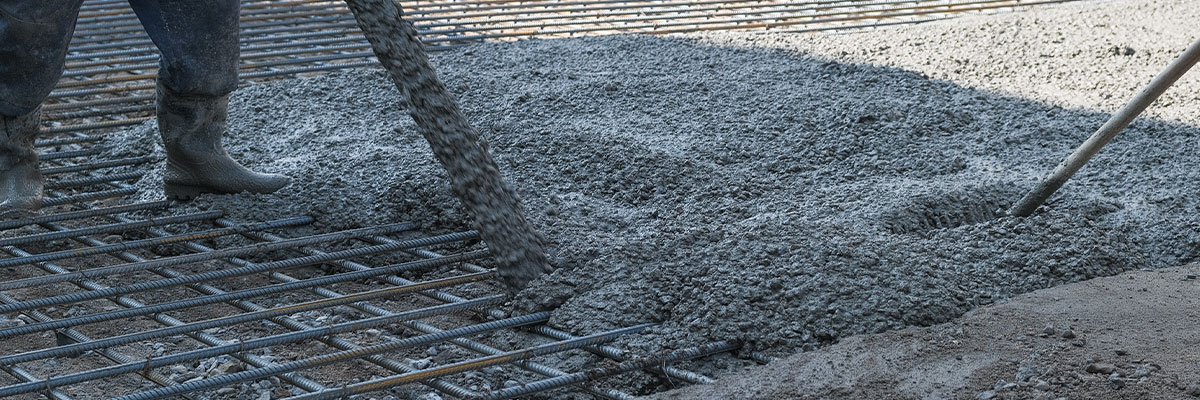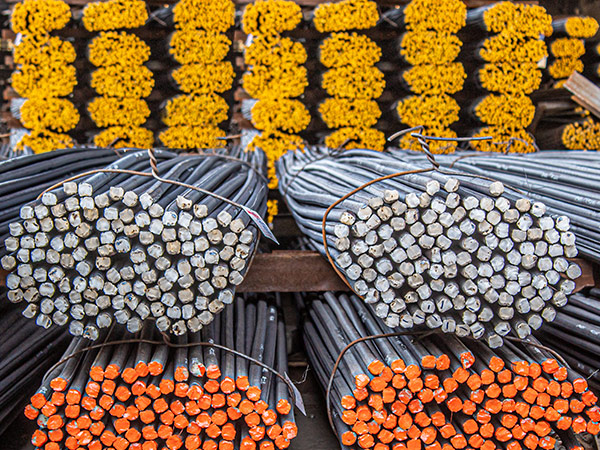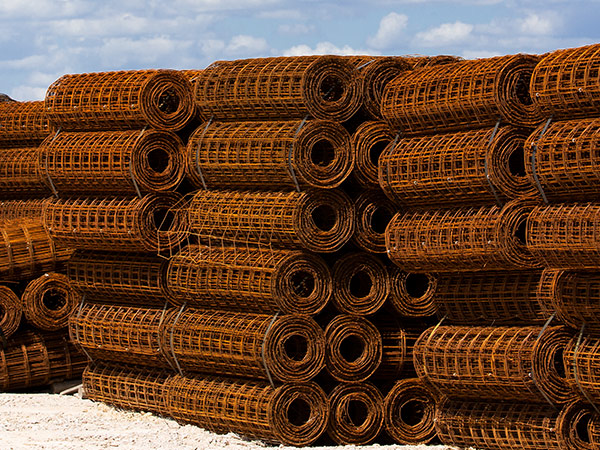

Rebar 101: What You Need to Know
Concrete cracks are one of the most common problems in construction. It's an unavoidable issue everyone has to deal with due to the properties of concrete. Although you can't prevent concrete cracks from occurring, there is a way to help reduce the chance of structural damage from cracks: rebar.
Rebar, which stands for reinforcing bar, is a steel bar that is used to strengthen concrete. It is generally laid out in a specific pattern before or during a concrete pour to improve concrete tensile strength, which ultimately reduces the incidence of cracks. This reinforcing steel can be added to any concrete project, including floors, slabs, walls, and more.
Different Types of Rebar

These round steel bars come in sizes that vary in diameter, length, and grades used in diverse applications and projects. The roundness allows them to be easily cut. They can be bent into curves easily, enabling them to handle load stress better when compared to corners. It's also ribbed rather than smooth to ensure a better bond with the concrete.
Rebar is usually referred to by its industry size designation. For example, the first and more commonly used one is #3 rebar, which is 3/8 inches in diameter. The next designation is #4, which measures 1/2 inches in diameter. The diameter size increases .125 for each additional designation, all the way up to #18, which measures 2.257 inches in diameter.

Additionally, there are two grades — Grade 40 and Grade 60. The grade describes the yield strength or the amount of stress that can be handled before it starts to weaken. A higher grade means a higher strength. Grade 40 provides a minimum yield strength of 40,000 pounds, while Grade 60 provides a minimum yield strength of 60,000 pounds.
The lengths it comes in are typically 20 feet, 40 feet, and 60 feet. However, you can always get it in a custom size — larger or smaller if you need it. If you're buying from a McCoy's store, you can talk to a store manager about getting custom cuts in #3 or #4 rebar.
Most home projects call for #3, #4, and #5 rebar. The #3 rebar works great with driveways and patios, while the #4 rebar works with walls and columns. The #5 rebar is used mainly for foundations and building footings. Commercial projects might require a larger size, but state and local building codes often determine what size to use.
How Is Rebar Made?
Rebar is produced by taking reclaimed scrap metal and placing it into a large container. Once it's collected, it's melted at very high temperatures and poured into a specific casting. Because it's made primarily of reclaimed scraped metal, it's an environmentally friendly product. McCoy's sources about 50-60% of its stock from US suppliers.

Rebar Vs. Wire Mesh
Rebar isn't the only material that you can use for concrete reinforcing. Wire mesh consists of thinner steel bars that come welded together already. It can be rolled and placed on large areas in a much more manageable and simpler way than rebar.
Because mesh is thinner, it's also not as robust as rebar. However, because rebar is more expensive, wire mesh is often used for smaller projects that don't require as much reinforcement, like concrete patios or driveways. Wire mesh is also available at your local store.

When Do You Need Rebar?
If you have a typical home driveway or concrete patio, it's not necessarily needed. However, if you plan on adding additional weight to the patio, like a hot tub or pergola, it could be useful. It is crucial for large commercial projects like buildings and roads, and also for home and garage foundations. It is sometimes used for driveways that see heavy loads like large trucks and heavy equipment, among other things.
As a rule of thumb, if you're working with concrete that will be more than five or six inches thick, rebar can help. It's certainly not a bad thing to add rebar to anything less than that, but it might be an unnecessary cost.
How Do You Cut Rebar?

You’ll probably need to cut your rebar to fit it to your project. The diameter will determine what tools you need to cut it. For the typical 3/8 inch diameter or 1/2 inch diameter rebar sizes, you can use an angle grinder, circular saw, or power saw to make a clean cut. Thicker rebar might require specialized equipment.
You can be creative and use other hand tools like bolt cutters or hacksaws, but you won't get the same straight-through cut power tools offer. Before you make a cut, it's essential to get accurate measurements and account for any bending you might need to do since that can change your bar lengths.

![]() Safety should be a top priority, so don't forget to wear safety glasses, safety gloves, and appropriate clothing. Cutting will generate sparks and can send metal pieces flying.
Safety should be a top priority, so don't forget to wear safety glasses, safety gloves, and appropriate clothing. Cutting will generate sparks and can send metal pieces flying.
![]() Safety should be a top priority, so don't forget to wear safety glasses, safety gloves, and appropriate clothing. Cutting will generate sparks and can send metal pieces flying.
Safety should be a top priority, so don't forget to wear safety glasses, safety gloves, and appropriate clothing. Cutting will generate sparks and can send metal pieces flying.
Why Buy Rebar At McCoy's?
McCoy's offers rebar in different lengths, grades, and diameter sizes, so whatever project you're working on, you'll find it at McCoy's. In fact, we bring in so many truckloads of inventory a month, it's almost certain we'll have what you need.
The price of rebar is closely tied to the price of scrap metal and when it comes to pricing, it's hard to find more competitive rates than what you'll see at your local McCoy's. Plus, you'll find one-stop shopping for accessories including rebar chairs to position the rebar properly and increase stability as well as rebar pins and caps.

Reviewed by David Dollar
McCoy's In-House Expert
